Catch the Insects
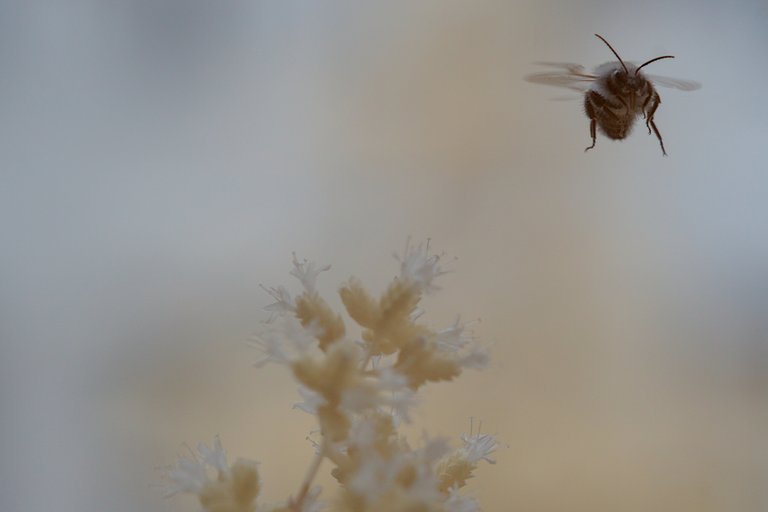
📷 Nikon Z5 (full spectrum converted) - Tokina ATX-Pro Macro 100/2,8 - f5,6 - ISO 400 - 1/1600 - 645 nm Filter
Greetings, friends of invisible light. I'm a bit limited at the moment as far as my photography is concerned. My car is broken. It takes a while for the right spare part for the "classic car" to arrive. What am I going to do with a 22-year-old car of which there are only 500 on the road in Germany? But I can't do without photography after all. I wanted to test whether you can take infrared photos with the macro lens. To say it straight away, you can. Now I didn't just want to do a technical test, I wanted to take real pictures. So I tried to photograph insects. In the end, it wasn't quite as easy as I had imagined. On the one hand, I had to focus manually. I'm a bit out of practice there. Unfortunately, the little animals don't stay still just because I want to photograph them. Some of them didn't feel like taking photos at all and fled as soon as they saw the camera.
Seid gegrüßt, Freunde des unsichtbaren Lichts. Ich bin im Moment etwas eingeschränkt, was meine Fotografie anbelangt. Mein Auto ist kaputt. Es dauert etwas, bis das passende Ersatzteil für den "Oldtimer" ankommt. Was fahre ich auch mit einem 22 Jahren Auto, von dem nur 500 Stück in Deutschland rumfahren? Aber so ganz ohne Fotografie geht es dann doch nicht. Ich wollte testen, ob man mit dem Makroobjektiv Infrarotfotos aufnehmen kann. Um es gleich vorwegzunehmen, man kann. Nun wollte ich nicht nur einen technischen Test machen, sondern richtige Bilder aufnehmen. Also versuchte ich Insekten zu fotografieren. Ganz so einfach, wie ich mir das vorstellte, war das dann letztendlich nicht. Einerseits musste ich manuell fokussieren. Ich bin da etwas aus der Übung. Die kleinen Tierchen halten leider nicht still, nur weil ich sie fotografieren will. Einige hatten überhaupt keinen Bock auf Fotos und sind sofort geflüchtet, als sie die Kamera sahen.
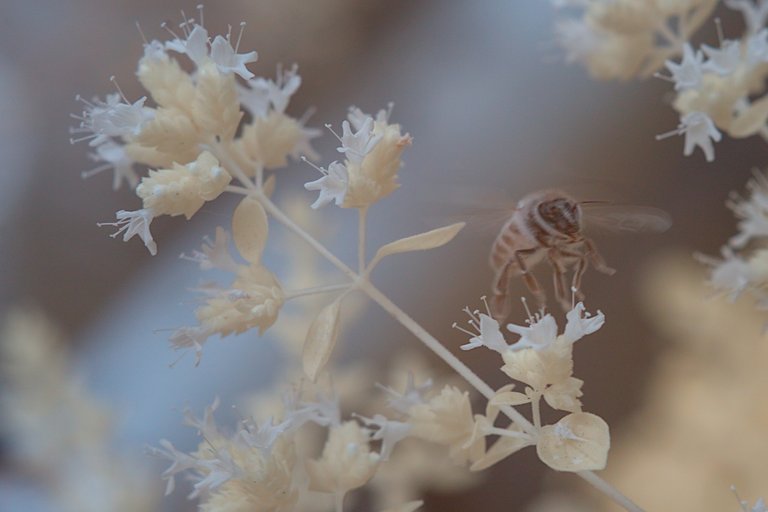
📷 Nikon Z5 (full spectrum converted) - Tokina ATX-Pro Macro 100/2,8 - f5,6 - ISO 400 - 1/320 - 645 nm Filter
The bees were the easiest to photograph. They didn't mind that I took pictures of them from a distance of 30 to 40 centimeters.
Die Bienen waren am einfachsten zu fotografieren. Die hat das nicht gestört, dass ich aus 30 bis 40 Zentimeter Entfernung Bilder von ihnen gemacht habe.
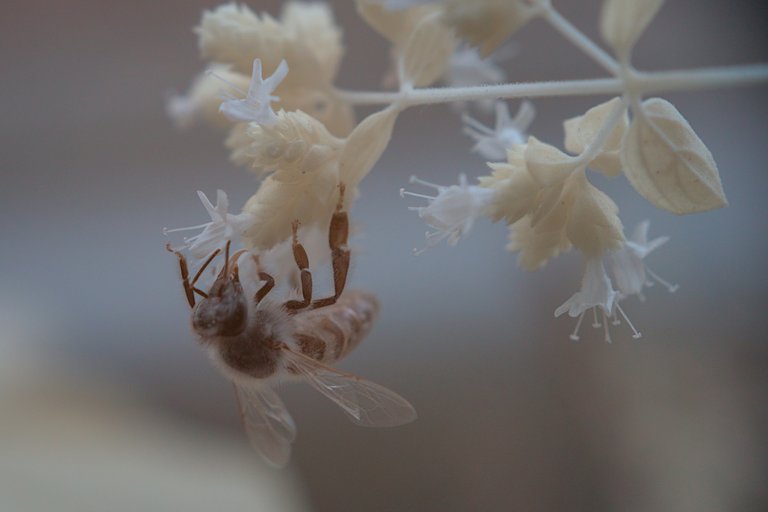
📷 Nikon Z5 (full spectrum converted) - Tokina ATX-Pro Macro 100/2,8 - f5,6 - ISO 400 - 1/500 - 645 nm Filter
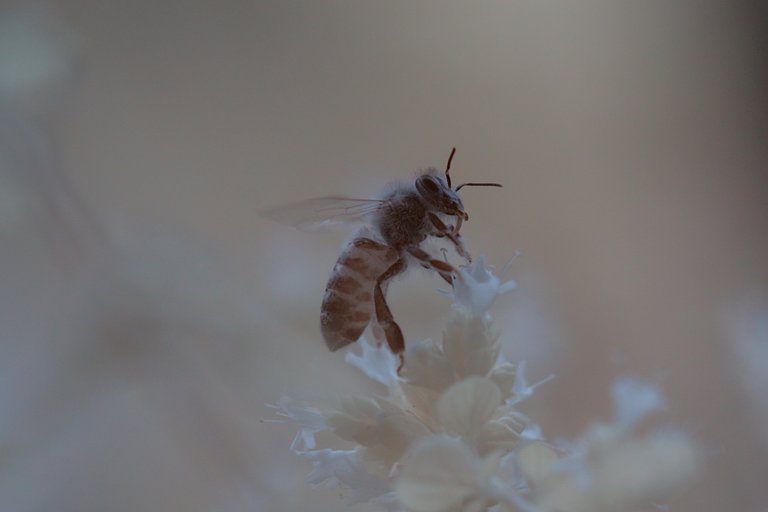
📷 Nikon Z5 (full spectrum converted) - Tokina ATX-Pro Macro 100/2,8 - f5,6 - ISO 400 - 1/800 - 645 nm Filter
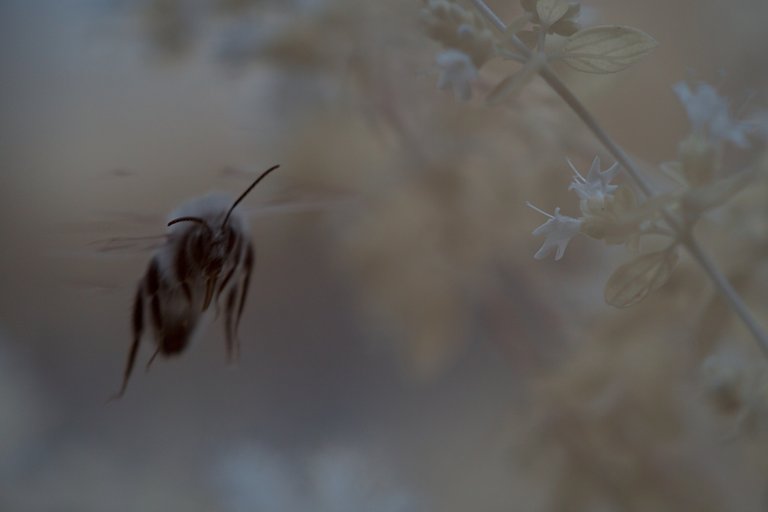
📷 Nikon Z5 (full spectrum converted) - Tokina ATX-Pro Macro 100/2,8 - f5,6 - ISO 400 - 1/800 - 645 nm Filter
The macro lens delivers amazingly good results. No hotspot is visible even at f/5.6. The sharpness is also good. I would not have guessed that. You don't find much on this subject either. Obviously not many people have come up with the idea of taking infrared photos with the macro lens. And whether this works just as well with other macro lenses as it does with the Tokina is of course not for me to say. You can't tell whether a lens is suitable for infrared photography by the focal length, the manufacturer or the price. Only test shots or a look at the Kolari Vision database will help. However, many lenses, such as the 100 mm Tokina, are not listed there.
Das Makroobjektiv liefert erstaunlich gute Ergebnisse. Es ist auch bei Blende 5,6 kein Hotspot erkennbar. Die Schärfe ist ebenfalls gut. Das hätte ich nicht vermutet. Man findet zu diesem Thema auch nicht viel. Offensichtlich sind bisher nicht viele Leute auf die Idee gekommen, mit dem Makroobjektiv Infrarotfotos zu machen. Und ob das mit anderen Makroobjektiven genauso gut funktioniert wie mit dem Tokina, kann ich natürlich nicht einschätzen. Ob ein Objektiv für die Infrarotfotografie geeignet ist, kann man weder an der Brennweite oder dem Hersteller noch am Preis erkennen. Da helfen nur Testaufnahmen oder ein Blick in die Datenbank von Kolari Vision. Viele Objektive, wie auch das 100 mm Tokina, sind dort allerdings nicht aufgelistet.
https://kolarivision.com/lens-hotspot-list/
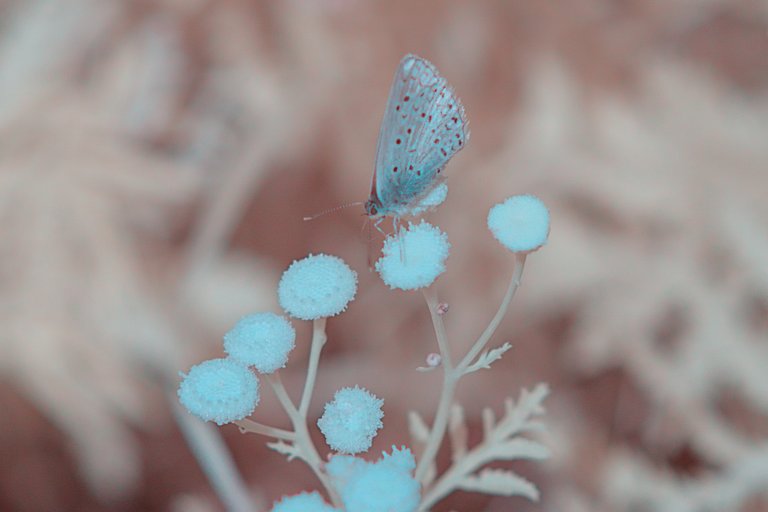
📷 Nikon Z5 (full spectrum converted) - Tokina ATX-Pro Macro 100/2,8 - f5,6 - ISO 400 - 1/4000 - 645 nm Filter
I'm not normally a macro photographer, so I'm not that interested in the subject. But with the infrared camera it's quite interesting. The butterfly above is brown in visible light, the pattern is barely recognizable. Obviously the wings reflect infrared light, similar to leaves. I can't say whether this is similar in other butterflies. All the other species fled from me.
Ich bin ja sonst kein Makrofotograf, das Thema interessiert mich nicht so sehr. Aber mit der Infrarotkamera ist das recht interessant. Der Schmetterling oben ist im sichtbaren Licht braun, das Muster ist kaum erkennbar. Offensichtlich reflektieren die Flügel infrarotes Licht, ähnlich wie Blätter. Ob das bei anderen Schmetterlingen ähnlich ist, vermag ich nicht zu sagen. Alle anderen Arten sind vor mir geflüchtet.
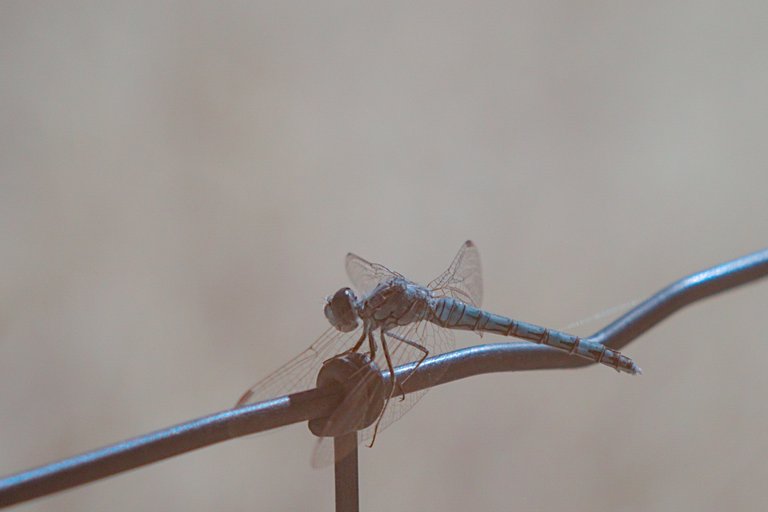
📷 Nikon Z5 (full spectrum converted) - Tokina ATX-Pro Macro 100/2,8 - f5,6 - ISO 400 - 1/4000 - 645 nm Filter
The dragonfly is also rather inconspicuous brown in visible light. Presumably the dragonfly uses this to protect itself from overheating. I will be doing some research on this soon. I knew that certain animals, especially birds, show iridescent colors in the ultraviolet range that remain invisible to us humans and most other creatures. But that the colors in the infrared range change in animals was previously unknown to me. I hope that I can contribute something enlightening in the next part. Until then, good invisible light at all times.
Auch die Libelle ist im sichtbaren Licht eher unscheinbar braun. Vermutlich schützt sich die Libelle damit vor Überhitzung. Ich werde demnächst einige Recherchen dazu betreiben. Dass bestimmte Tiere, vor allem Vögel, im ultravioletten Bereich schillernde Farben zeigen, die für uns Menschen und die meisten anderen Lebewesen unsichtbar bleiben, wusste ich. Aber dass sich die Farben im infraroten Bereich bei Tieren ändern, war mir bisher unbekannt. Ich hoffe, dass ich im nächsten Teil etwas Erhellendes dazu beitragen kann. Bis dahin allzeit gutes unsichtbares Licht.

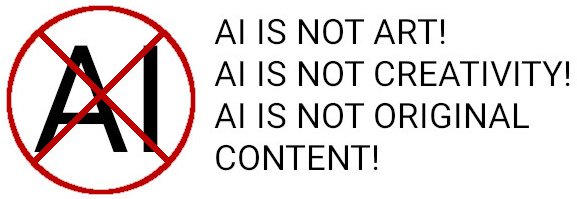

WHAT IS LIGHT PAINTING?


LICHTKUNSTFOTO
If you like my art visit www.lichtkunstfoto.de for more Light Art Photography and informations about Light Painting. Join me on Flickr Twitter



For more great Light Art Photography, Light Painting and inspiration check these light painters: @marlasinger666 @fadetoblack @fastchrisuk @dawnoner @oddballgraphics @martbarras @stepko @rod.evans.visual @yo-hoho @maxpateau @gunnarheilmann @neilru75 @maximepateau @ryuslightworks @lightstabeu @candelart @lacelight

WE ARE LIGHT PAINTERS

To help and support the LightPainters community here on Hive I would appreciate your delegation of HivePower. Any amount is appreciated. It does not require much to get started, we are happy for any gesture. @lightpainters
How to delegate?
Delegate 50HivePower, [50HP]
Delegate 250HivePower, [250HP]
Delegate 500HivePower, [500HP]
Delegate 1000HivePower, [1000HP]
All the Hive Power will help to upvote the artist's contribution as part of the LightPainters community.
I like the soft tones and color palette.
Thanks ☺️
Truly a perfect catch. I love that shot.
Thanks